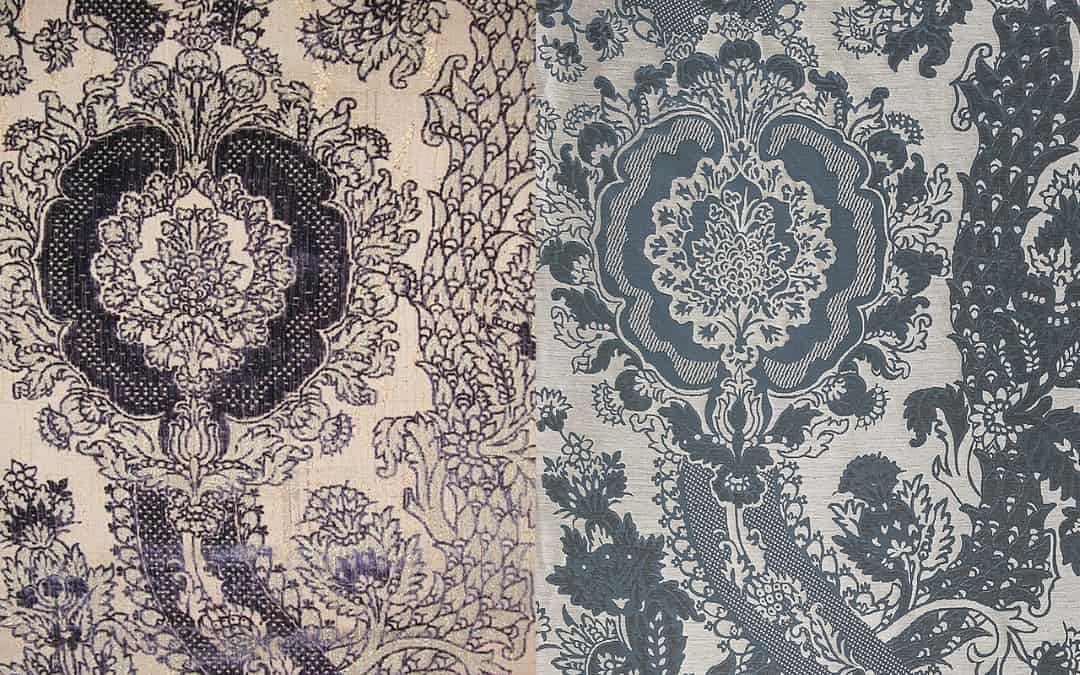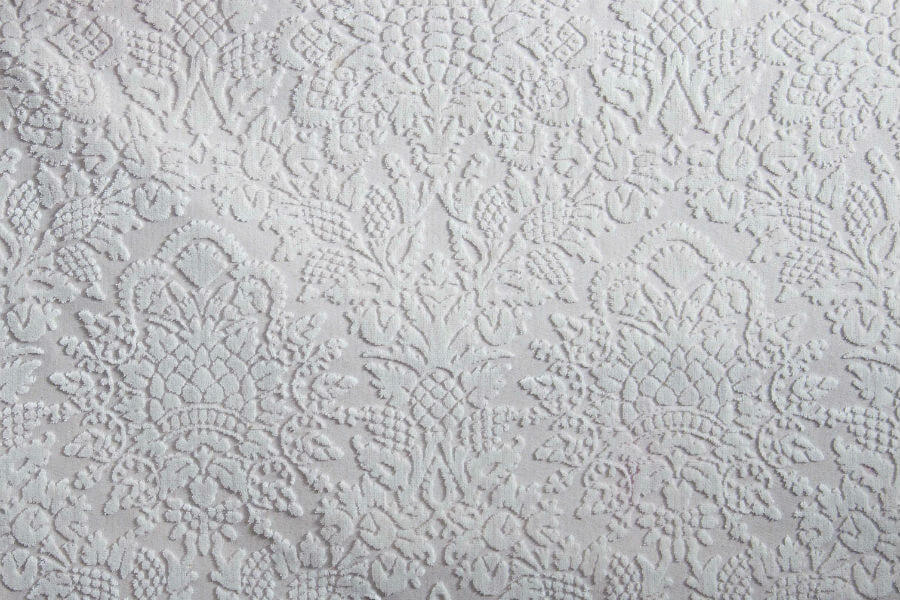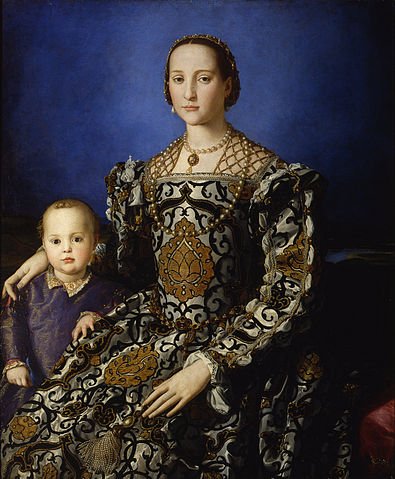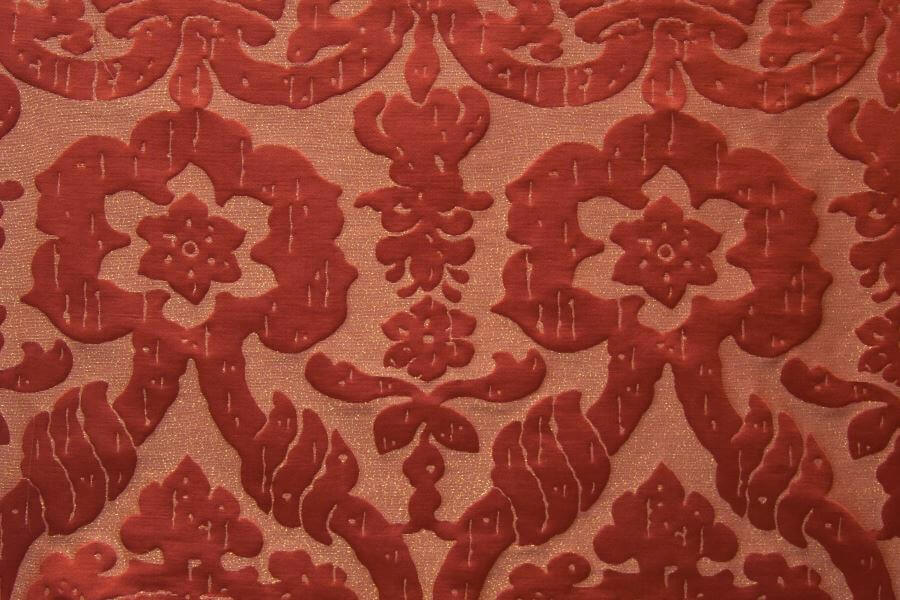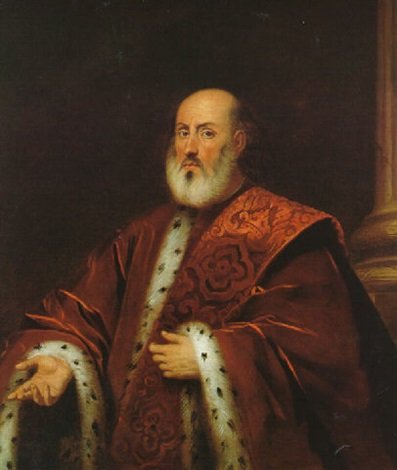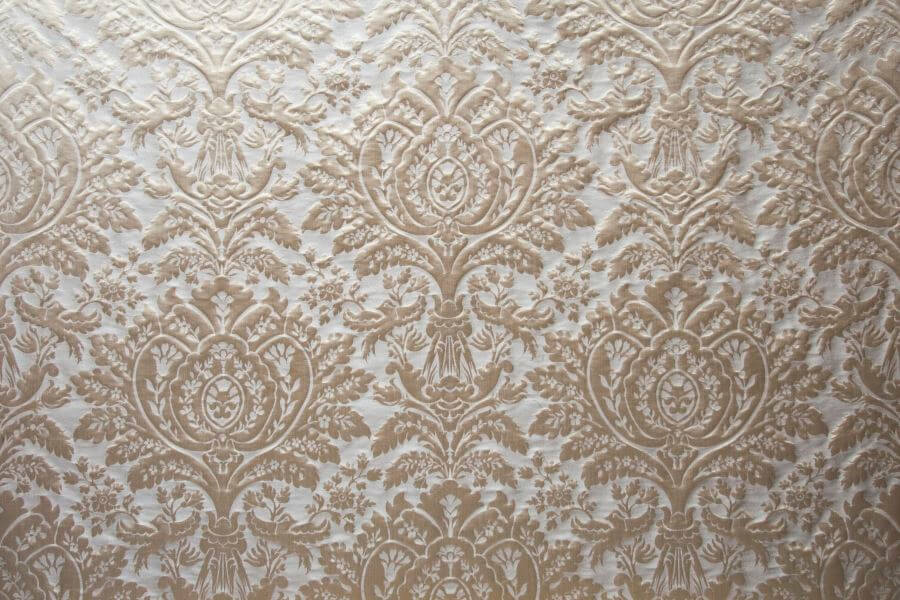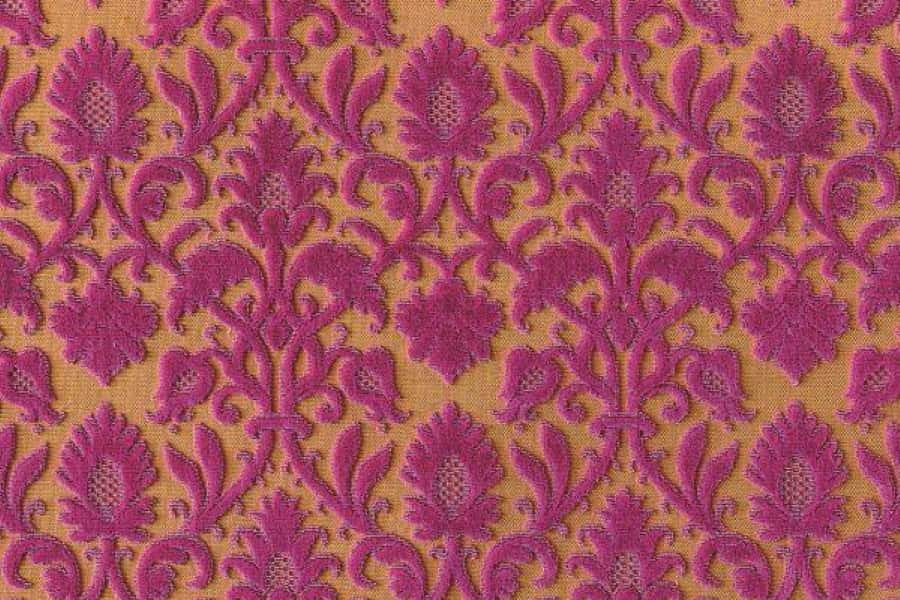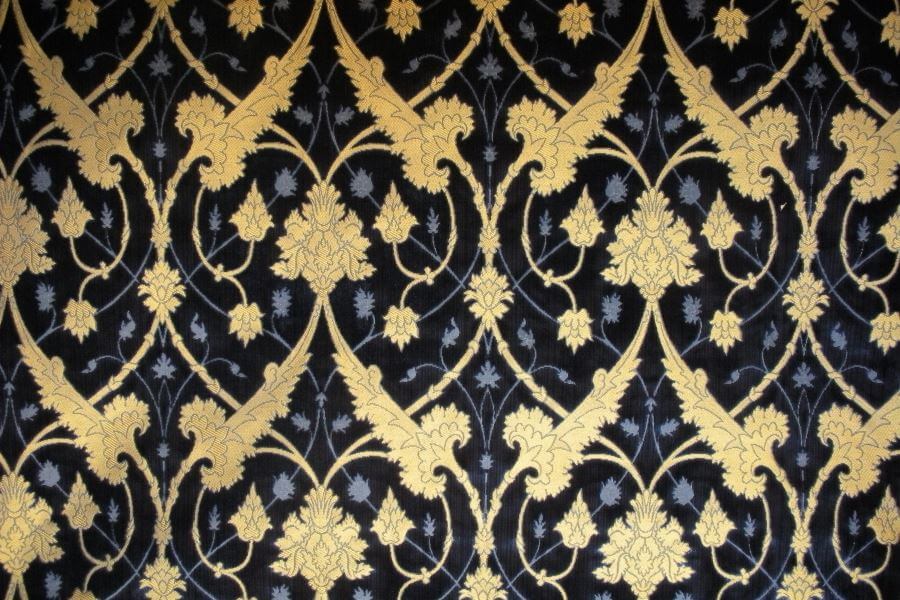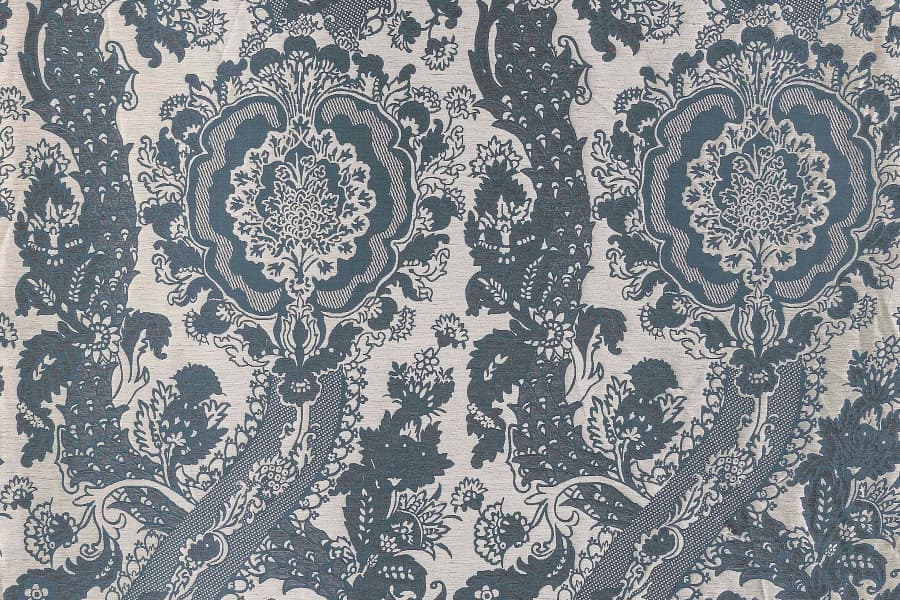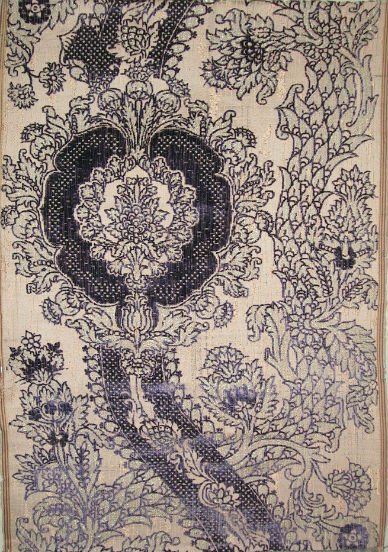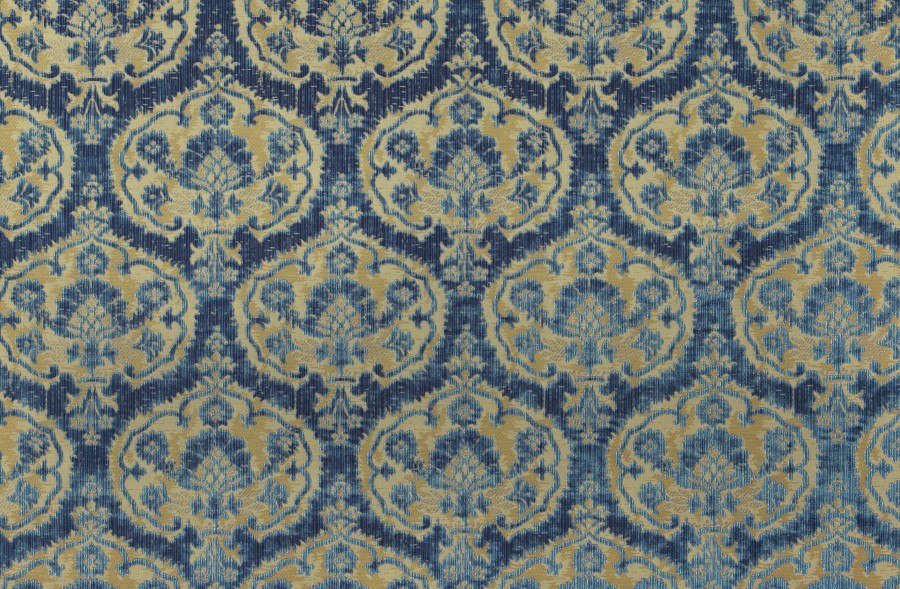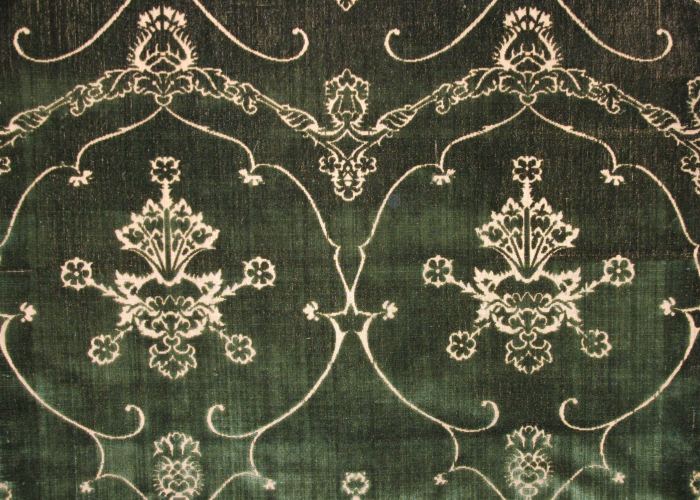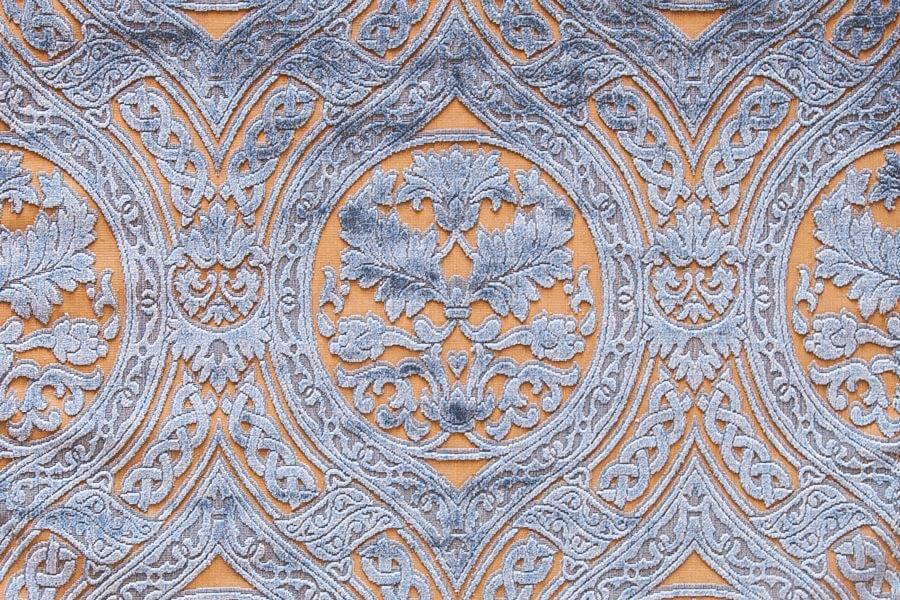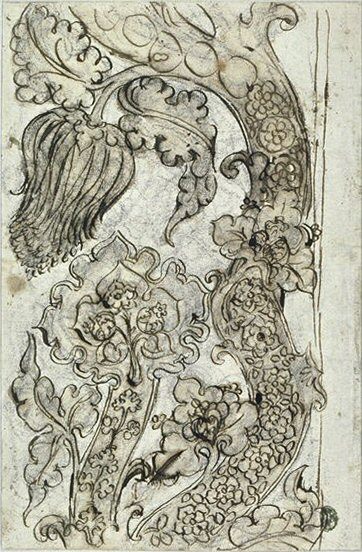What were the decorative motifs that characterised the fabrics used in the Renaissance? The textile scraps that have survived till our time are unfortunately few, but paintings and our Historical Archive, which contains more than 3,000 designs used for furnishing and clothing fabrics, some of which refer to that historical period, come to our aid.
Between approximately 1400 and 1600, the wealthier classes used to commission the production of fabrics with motifs which had been popular during the previous centuries, but the choice widened with the introduction of new designs. Moreover, Italian Renaissance fabrics were enriched by gold and silver threads in the wefts. Their opulence was highlighted by increasingly wide motifs that only at the end of the 16th century shrank when applied to clothing fabrics, thus leading to a differentiation from furnishing fabrics that until then didn’t exist.
Pomegranate Pattern
The most popular motif in the Renaissance was the so-called “pomegranate“, a pattern that also included pine cones and thistle or lotus flowers. Persians considered pomegranate a symbol of fertility and immortality, and this meaning spread to the West. During this period it was favoured among ladies, too, who associated it with an image of renown and wealth. Indeed, you can see it in all its splendour on Eleanor of Toledo’s dress, as portrayed by the Bronzino (around 1545). Here the pomegranate has another meaning, too: it’s one of the symbols of the Spanish court, from which Cosimo I de’ Medici’s wife came. An example from our catalogue is the Ardis velvet.
Heraldic Patterns
Embroidering mottoes and blazons of one’s house on fabrics was another way to express one’s power and signal the family one came from. Heraldic symbols also characterized the toga of the Senators of the Serenissima: the crown (indicating high rank) and the stylized rose with a button in the centre (representing honour and nobility), as you can see in the portrait of a Venetian Senator by Domenico Tintoretto (1560-1635). This pattern is part of our catalogue as Senatori heddle velvet and Senatori brocatelle.
Oriental Inspired Patterns
The Renaissance was crowded with vegetal elements coming from China, India, Persia and Turkey. Like the Sagredo pattern, characterised by very large designs and natural elements such as leaves, flowers and birds. Or another decorative motif that recalls leaves and lotus flowers, called Rinascimento and present in our catalogue as soprarizzo velvet (handmade), heddle velvet and brocatelle. Ca’ d’Oro velvet pattern resembles the Turkish fabrics of the 16th century, with slender shoots that cross with other twigs, enriched with lotus flowers, thistles and stylized pine cones and the long-halved leaf, which is typical of the Islamic world.
“Griccia” Pattern
The griccia pattern is arranged vertically, with a sinuous trunk surrounded by leaves, most of all acanthus leaves, pine cones and similar elements. Like in our Griccia brocatelle, of which we also show you the original design from our Archive, characterised by a trunk from which small pomegranates sprout and which ends with a corolla surrounded by thistle flowers.
“Cammino” and “Inferriata” Patterns
The “cammino” motif has a horizontal arrangement, instead, and is characterised by corollas with a varied number of lobes, containing pomegranates, pine cones or thistles, which alternate with leaves. In the example shown below, our Cardi velvet, the corolla has five lobes and encloses a pinecone.
Cardi Velvet
A particular kind of “cammino” motif is the “inferriata” (or voided) pattern, whose corollas are rendered with thin outlines and are empty, apart from the pomegranate or flower in the middle of them. Our Inferriata handmade velvet below, has corollas with central pomegranates in bloom, and between each of them there’s a pine cone.
Inferriata Velvet
Patterns Inspired by Drawings by Artists of the Time
Jacopo Bellini and Pisanello, for instance, designed various motifs that may have inspired fabric designs, such as the one depicted below from Pisanello’s Codex Vallardi, which is very similar to the griccia motif seen above. Another very popular motif for fine fabrics at the end of the 15th century were the “Da Vinci’s knots”, which also inspired our “Da Vinci” soprarizzo velvet (handmade) and “Da Vinci” heddle velvet.

